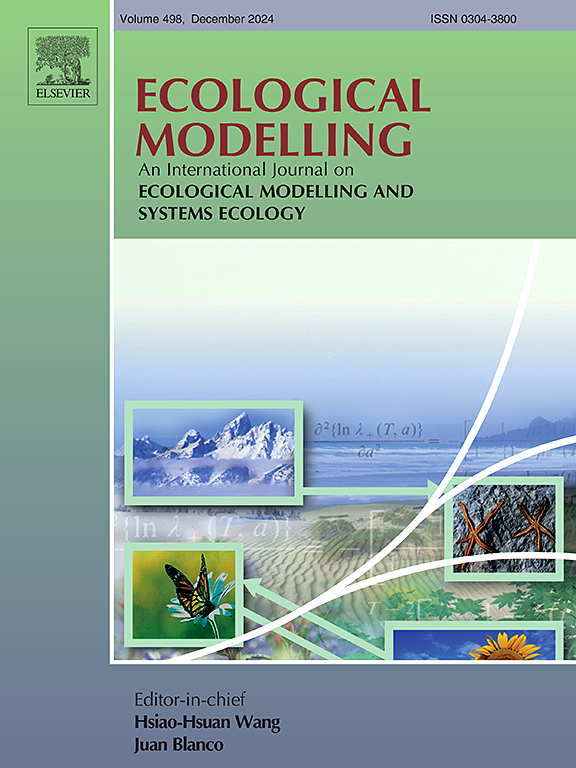Recommendations for estimating and detecting time-varying spawner-recruit dynamics in fish populations
IF 3.2
3区 环境科学与生态学
Q2 ECOLOGY
引用次数: 0
Abstract
Models that account for time-varying dynamics are increasingly used in population assessments in recognition of changing biological and environmental conditions. We performed a systematic simulation analysis based on a semelparous life history to evaluate the performance of various Ricker spawner-recruit models including stationary, random-walk, and regime shift models, that offer various interpretations of time-varying dynamics. Estimation models that allowed parameters to vary following random-walks tended to perform equally well or outperform regime shift and stationary models. However these results were not consistent across all scenarios examined. We also evaluated the performance of model selection criteria commonly used to identify time-varying processes. Both likelihood based model selection criteria (AICc and BIC) and cross-validation methods (LFO) were found to be unreliable, with a few exceptions. Changes in productivity were more identifiable than changes in capacity or both parameters, which were often indiscernible from stationary dynamics. The results were sensitive to the magnitude of parameter change and extent of residual variability (unexplained error), with greater changes and lower error being easier to accurately estimate and select. Given this context dependence for the accuracy of parameter estimates with time-varying models, and unreliable nature of selection criteria, we recommend that analysts conduct case-specific simulation-evaluations when model choices may have important and divergent management implications.
估计和检测鱼类种群中随时间变化的产卵-招募动态的建议
考虑时变动态的模型越来越多地用于人口评估,以认识到不断变化的生物和环境条件。我们基于半胎生的生活史进行了系统的模拟分析,以评估各种Ricker产卵-招募模型的性能,包括平稳模型、随机游走模型和制度转移模型,这些模型提供了各种时变动力学的解释。允许参数随随机游走而变化的估计模型往往表现得同样好或优于状态转移和平稳模型。然而,这些结果并不是在所有情况下都一致。我们还评估了通常用于识别时变过程的模型选择标准的性能。除了少数例外,基于似然的模型选择标准(AICc和BIC)和交叉验证方法(LFO)都是不可靠的。生产力的变化比能力的变化或两者的变化更容易辨认,后者往往无法从静止的动态中辨别出来。结果对参数变化幅度和剩余变异程度(未解释误差)较为敏感,变化越大,误差越小,越容易准确估计和选择。考虑到随时间变化的模型对参数估计准确性的上下文依赖,以及选择标准的不可靠性质,我们建议当模型选择可能具有重要和不同的管理含义时,分析人员进行具体案例的模拟评估。
本文章由计算机程序翻译,如有差异,请以英文原文为准。
求助全文
约1分钟内获得全文
求助全文
来源期刊

Ecological Modelling
环境科学-生态学
CiteScore
5.60
自引率
6.50%
发文量
259
审稿时长
69 days
期刊介绍:
The journal is concerned with the use of mathematical models and systems analysis for the description of ecological processes and for the sustainable management of resources. Human activity and well-being are dependent on and integrated with the functioning of ecosystems and the services they provide. We aim to understand these basic ecosystem functions using mathematical and conceptual modelling, systems analysis, thermodynamics, computer simulations, and ecological theory. This leads to a preference for process-based models embedded in theory with explicit causative agents as opposed to strictly statistical or correlative descriptions. These modelling methods can be applied to a wide spectrum of issues ranging from basic ecology to human ecology to socio-ecological systems. The journal welcomes research articles, short communications, review articles, letters to the editor, book reviews, and other communications. The journal also supports the activities of the [International Society of Ecological Modelling (ISEM)](http://www.isemna.org/).
 求助内容:
求助内容: 应助结果提醒方式:
应助结果提醒方式:


